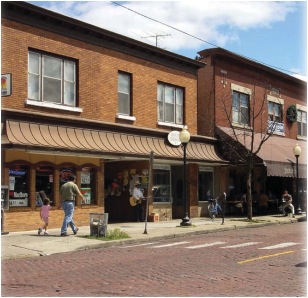Just days after the interagency Partnership for Sustainable Communities was issued a death blow by having its funding axed in the FY2012 transportation budget, which President Obama signed into law Friday, HUD issued a reminder of just how sad that loss is: The agency released its list of 2011 award grantees -- communities embarking on visionary projects that, with this assistance, will enable them to plan for the future holistically.

HUD granted nearly $96 million in 27 Community Challenge grants and 29 Regional Planning grants.
"The communities selected to receive these grants have a great opportunity to put their plans for smarter development and economic revitalization into action," said Geoffrey Anderson of Smart Growth America in an email. "These grants are bittersweet, however, since they come just days after Congress passed legislation that did not include specific funding for another round of HUD grants next year."
The Community Challenge grants are awarded to communities and organizations working to integrate transportation and housing, a key smart-growth goal and the focus of many livability advocates, like the Center for Neighborhood Technology, which seeks to include transportation in the calculation of housing costs. With a HUD grant, communities can update their local plans and zoning and building codes to support mixed-use development, affordable housing and the re-use of older buildings, according to HUD.
Regional Planning grants do much the same thing on a regional scale, with a priority on partnerships, including arts and culture and philanthropy. These grants aren’t just for planning, either; they’re also available for implementation of well-drawn plans for sustainable development.
As if it weren’t tragic enough to see Congress kill off the office’s funding, it’s especially sad that it had to happen during a banner year for interest in the program, in which applications outstripped available money more than 5 to 1. And, according to HUD, they’re encouraging just the kinds of partnerships they’re designed for:
This year, HUD's investment of $95.8 million is garnering $115 million in matching and in-kind contributions - which is over 120 percent of the Federal investment - from the 56 selected grantees. This brings to total public and private investment for this round of grants to over $211 million.
In truth, HUD’s Office of Sustainable Communities wasn’t completely zeroed out – there’s enough in the budget to keep the lights on, but not enough to make grants. I’m not sure what the office will do if it’s not making grants, though. Maybe some low-level cooperation with DOT and EPA can continue – after all, it seems like a no-brainer that the efforts the three agencies have made fit well within the goals lawmakers on both sides of the aisle have been trumpeting this reauthorization cycle: streamlining federal process, eliminating duplication, accelerating project delivery. Aren’t those things Republicans and Democrats can get behind?
Apparently the members of the conference committee thought such federal cost-cutting – and the livability programs the partnership supports – were dispensable. But HUD’s extensive documentation of the grants in this cycle proves otherwise.
For example, Michigan brings home more than $7 million for four different projects: corridor planning in Grand Rapids, denser housing for the county where Ann Arbor sits, tri-county sustainability planning in mid-Michigan, and region-wide data analysis in the northwestern part of the state.
Kaid Benfield of NRDC’s Switchboard blog spotlights a worthy project in Boston:
Consider the distressed neighborhooods along Boston’s Fairmount/Indigo transit corridor, for example. Ninety thousand people live within walking distance of the line (but not within walking distance of the limited number of stops), their median income some 35 percent below the state average. Two-thirds of the Boston region’s foreclosures were along the corridor. But currently the rail service lacks stops in the low-income communities that most need them; as a result the line primarily serves commuters passing through. HUD is awarding the City of Boston $1,865,160 to facilitate mixed-income, mixed-use development in conjunction with the construction of four strategically placed new stations (and improvements to existing stations) along the line.
The Sustainable Communities Initiative isn’t just about federal bureaucratic efficiency, though it is about that. It’s also signaled a sea change in mainstream thinking about planning. If even big, ossified agencies like HUD, DOT and EPA can learn to intertwine work on housing, transportation, economic development, and environmental protection, the barriers between those sectors begin to blur and fade away. Community and regional planning grants like the ones announced this week were a celebrated symbol of the long-overdue integration of those fields, and they’ve made an incalculable difference in the communities they’ve assisted. With any luck, the next Congress won’t be so short-sighted in making spending cuts.





